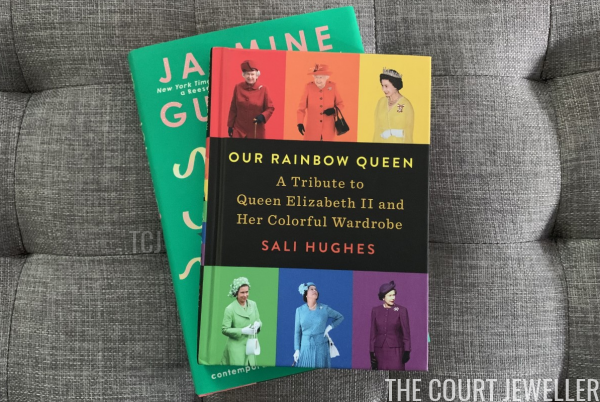
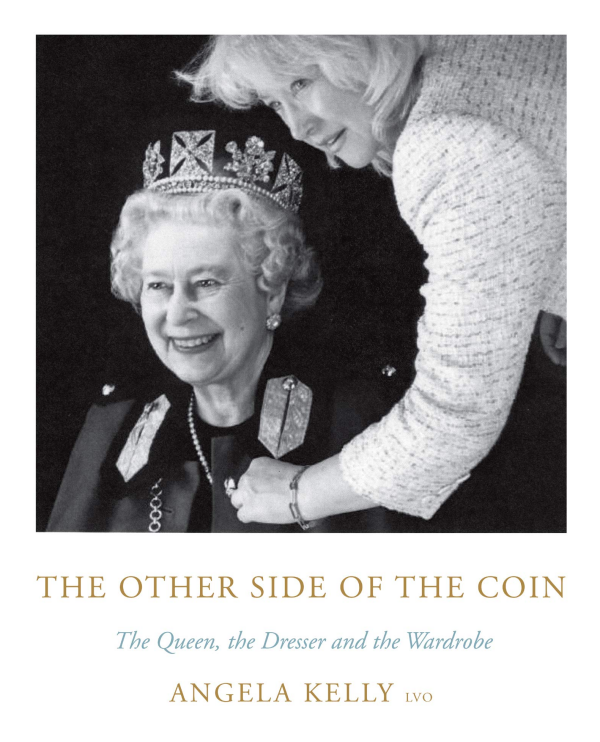
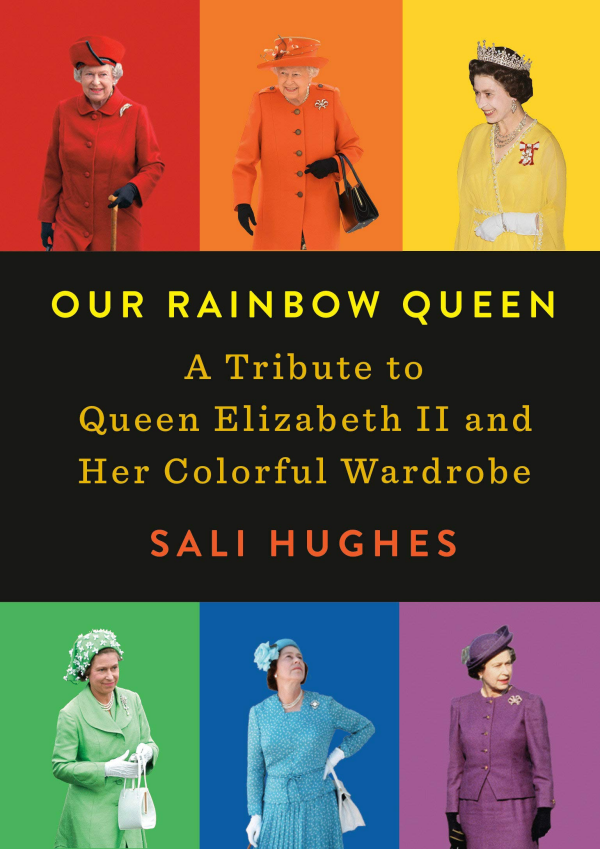
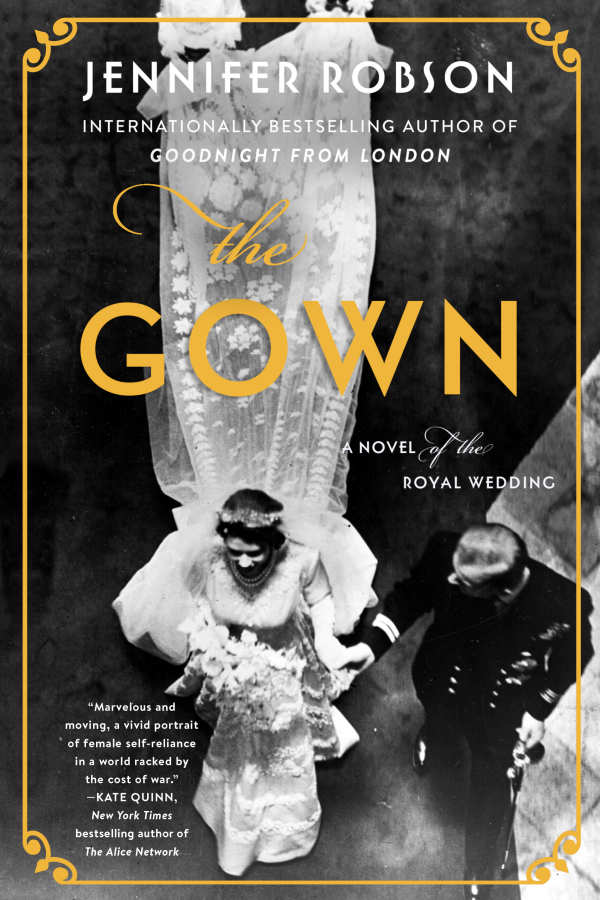
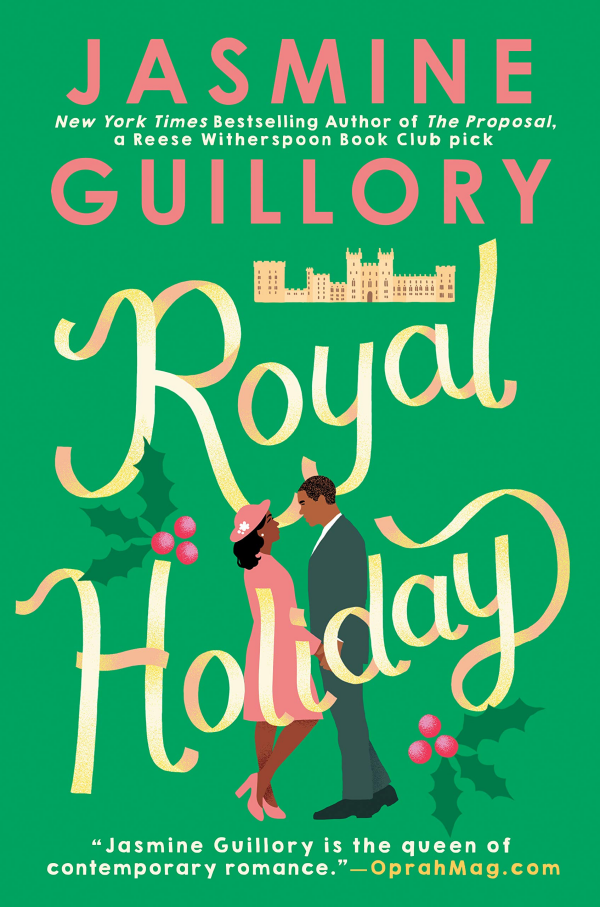
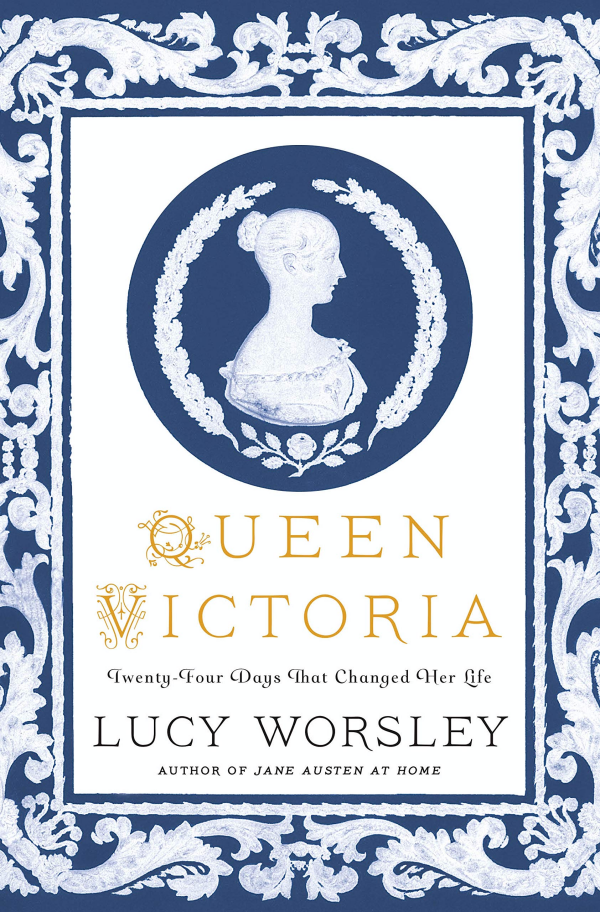
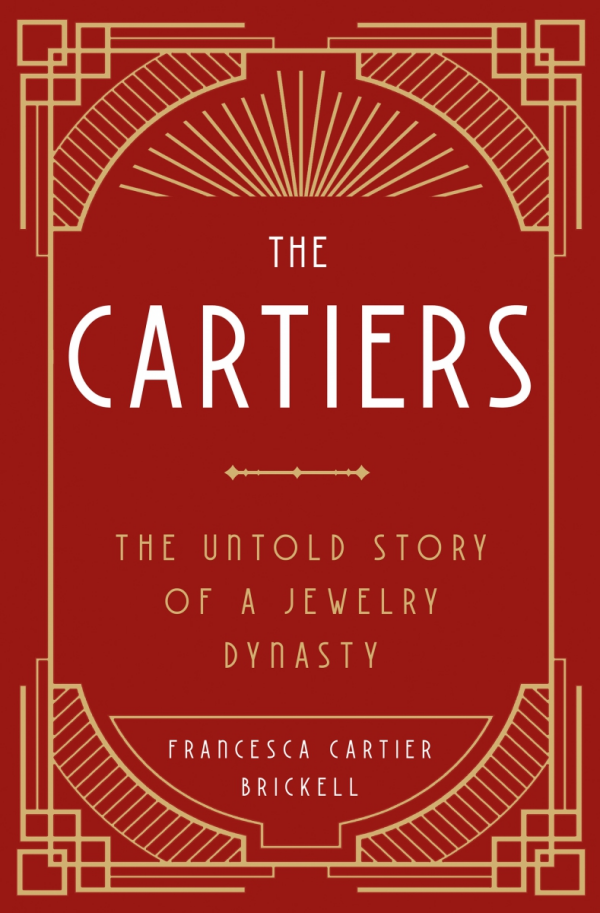
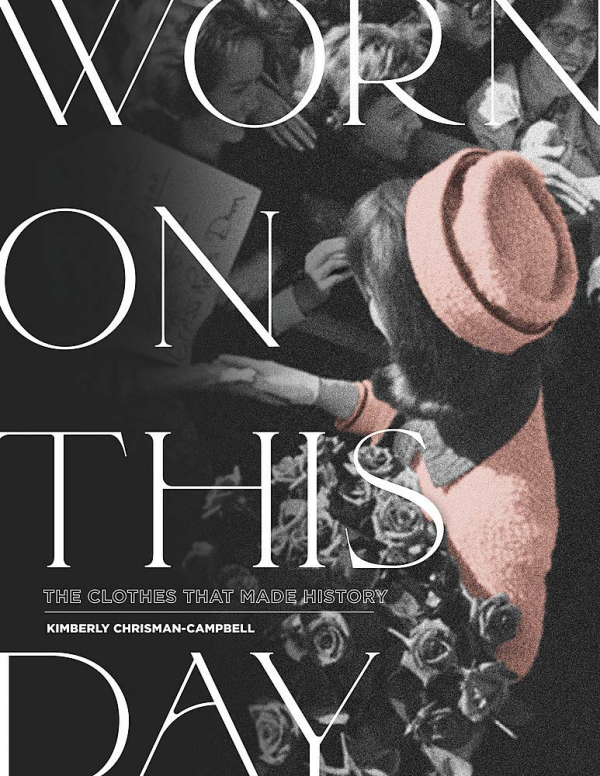
Sparkling Royal Jewels From Around the World









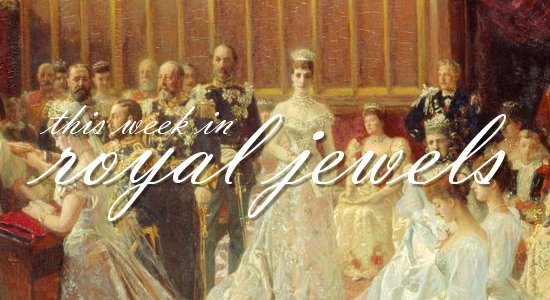
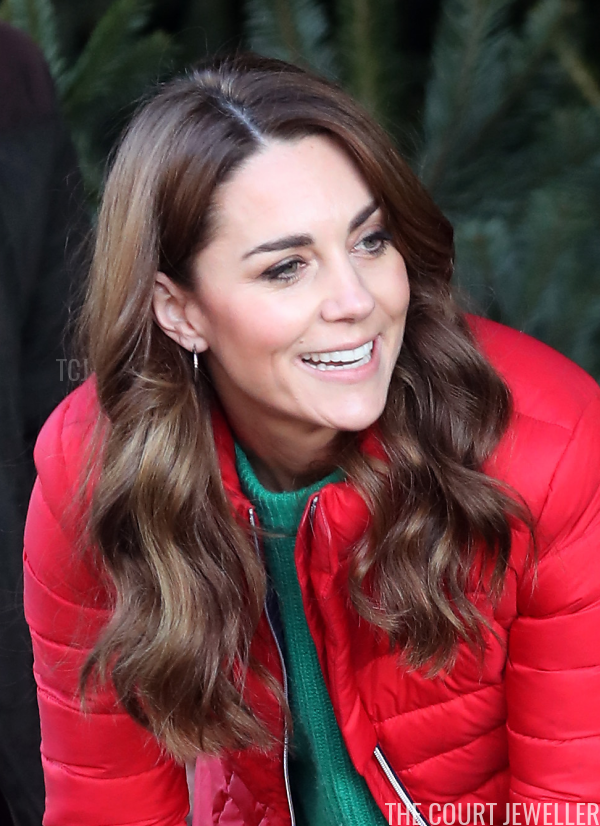 |
| Chris Jackson/Getty Images |
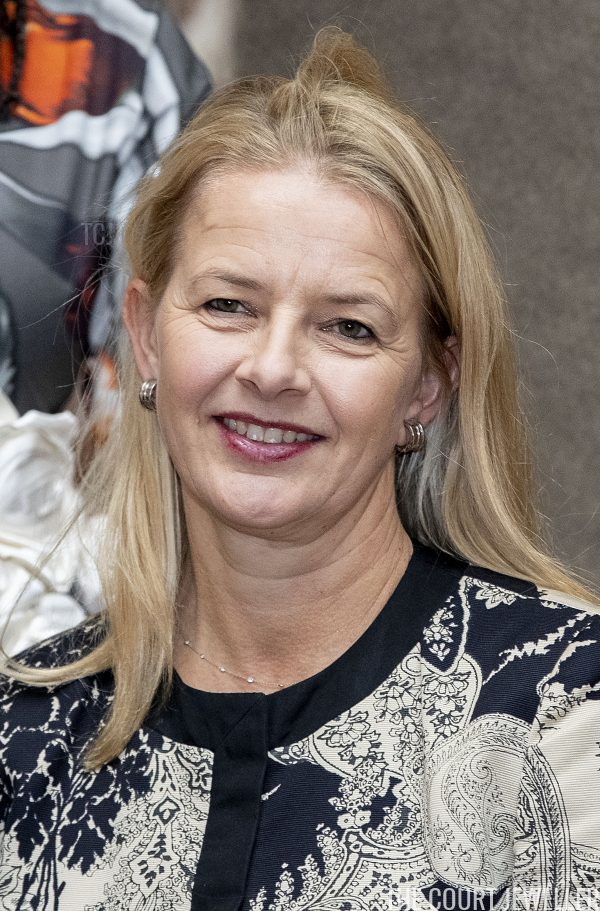 |
| Patrick van Katwijk/Getty Images |
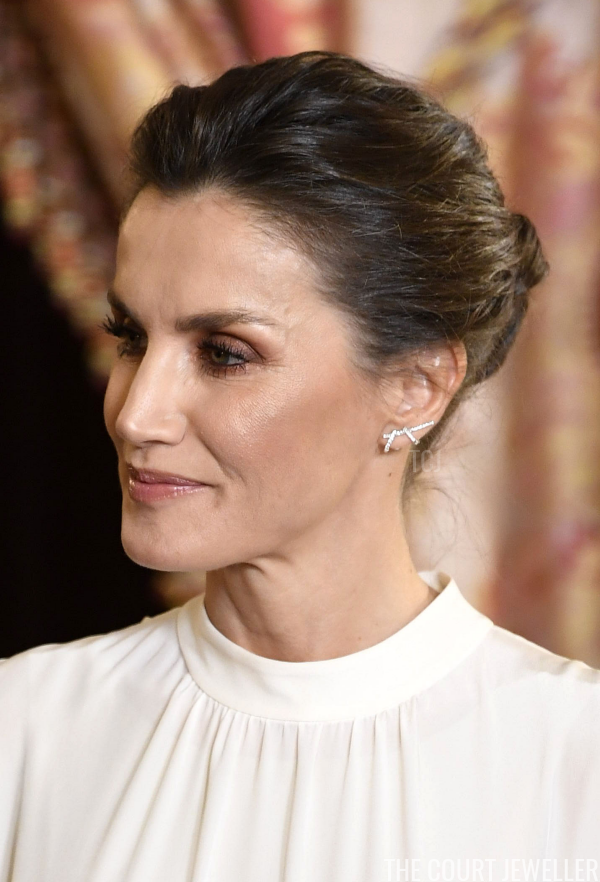 |
| Carlos Alvarez/Getty Images |
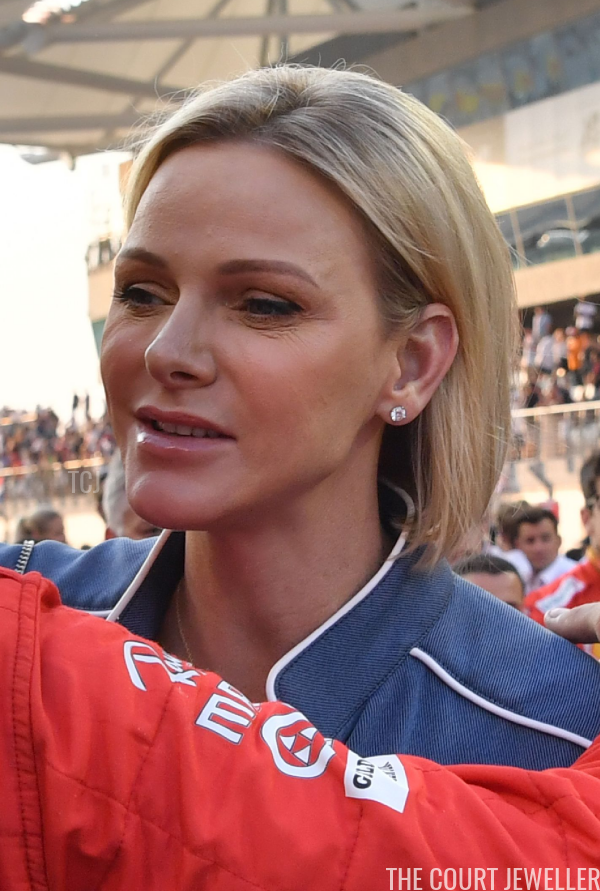 |
| ANDREJ ISAKOVIC/AFP via Getty Images |
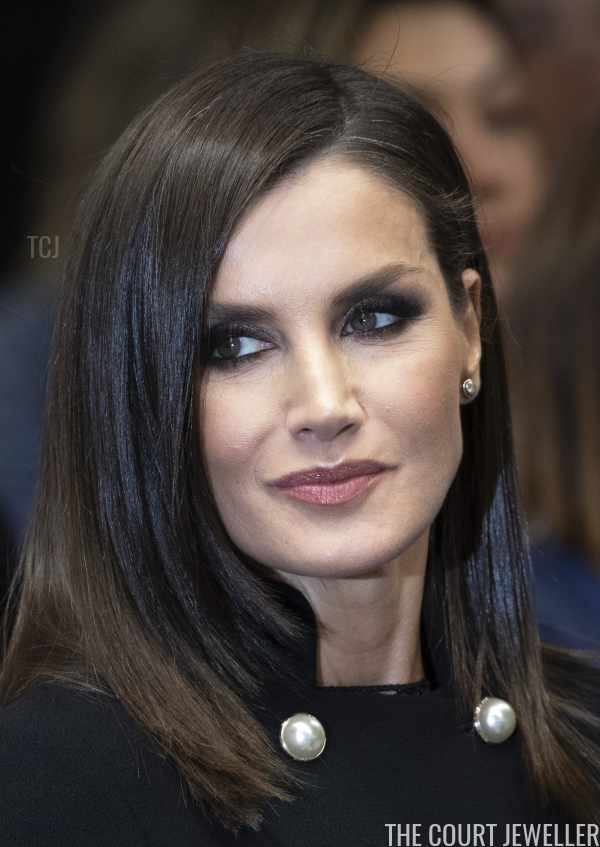 |
| Pablo Blazquez Dominguez/Getty Images |
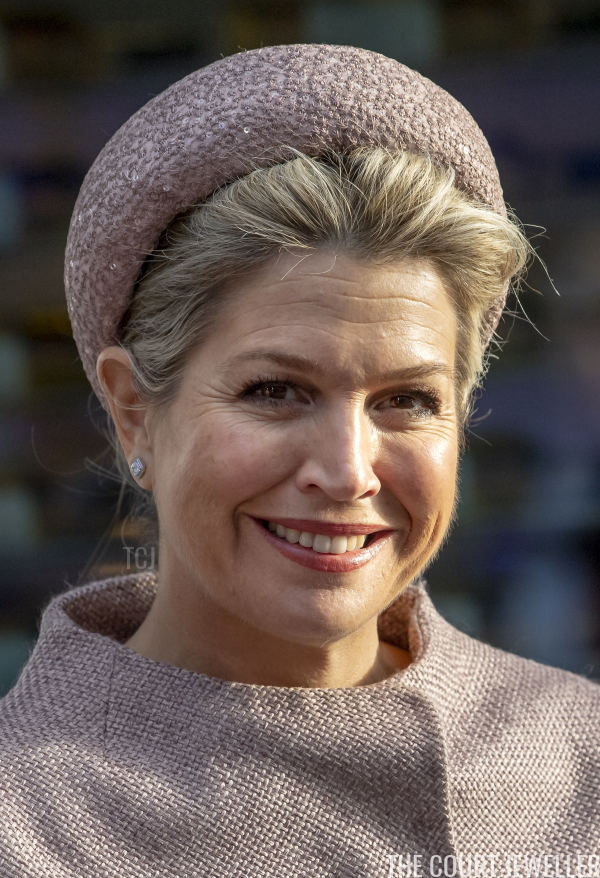 |
| FRANK VAN BEEK/ANP/AFP via Getty Images |
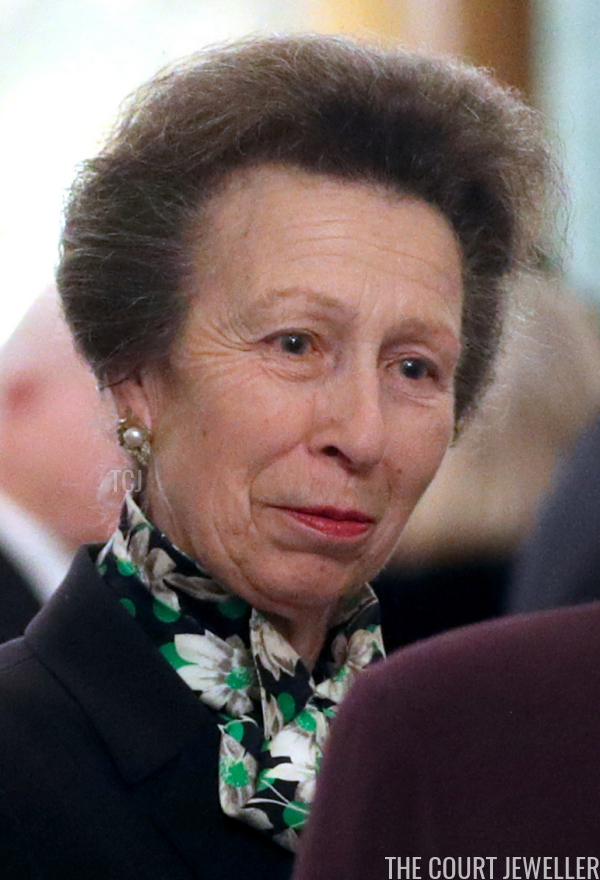 |
| YUI MOK/POOL/AFP via Getty Images |
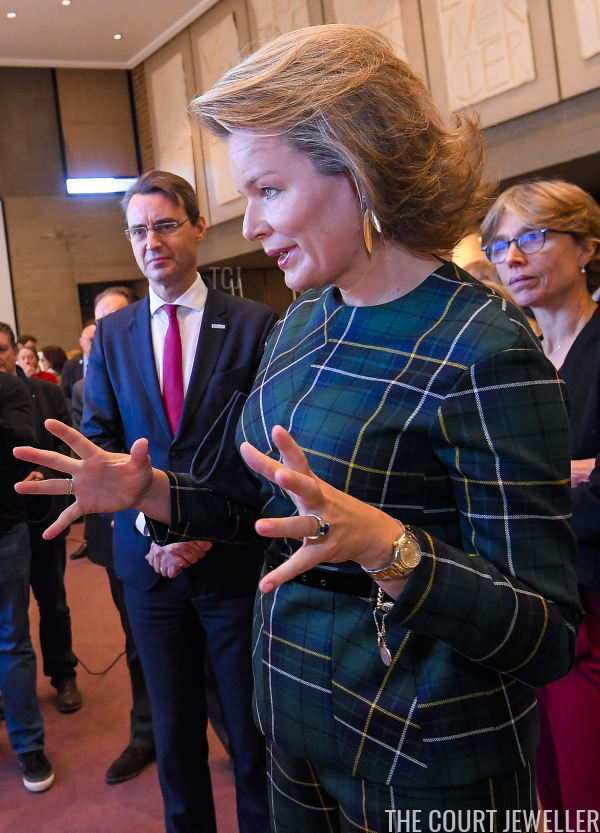 |
| LAURIE DIEFFEMBACQ/BELGA MAG/AFP via Getty Images |
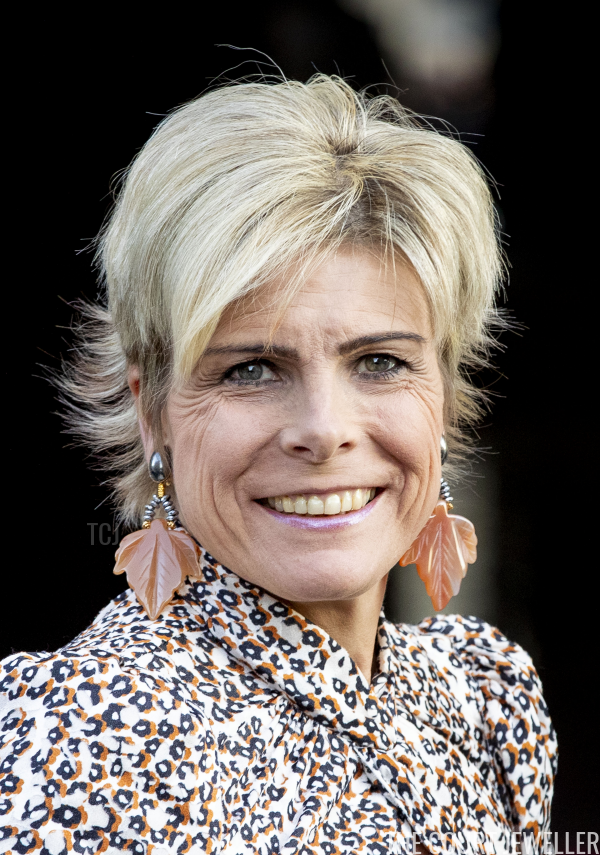 |
| Patrick van Katwijk/Getty Images |
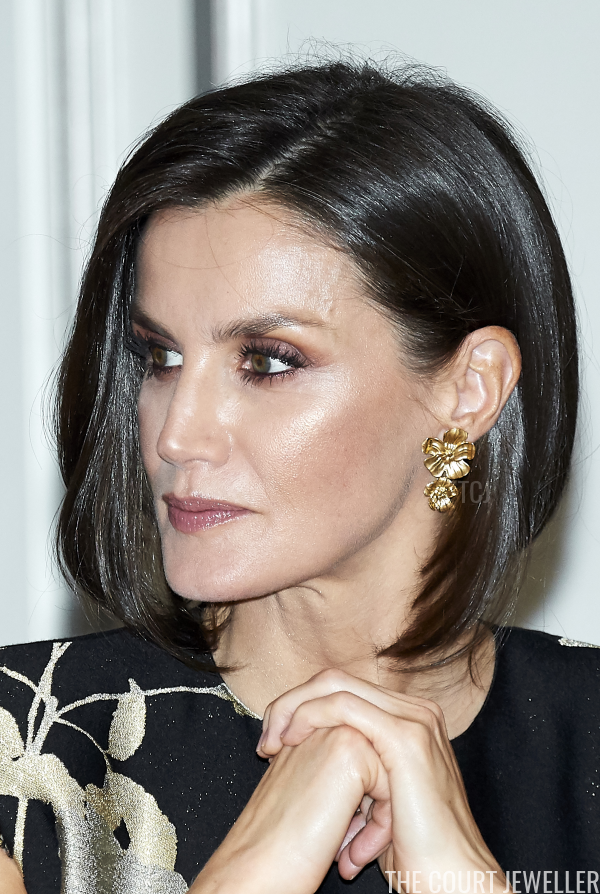 |
| Carlos Alvarez/Getty Images |
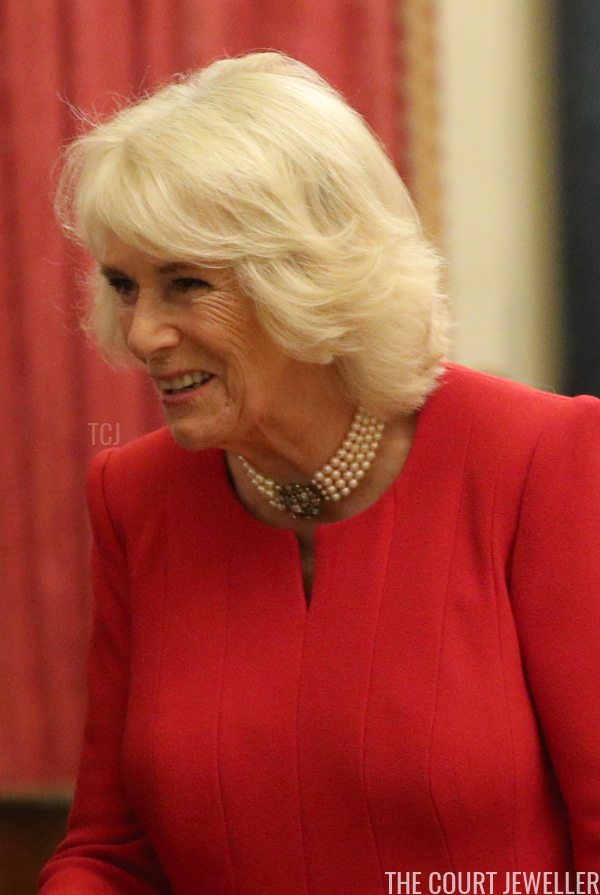 |
| Yui Mok – WPA Pool/Getty Images |
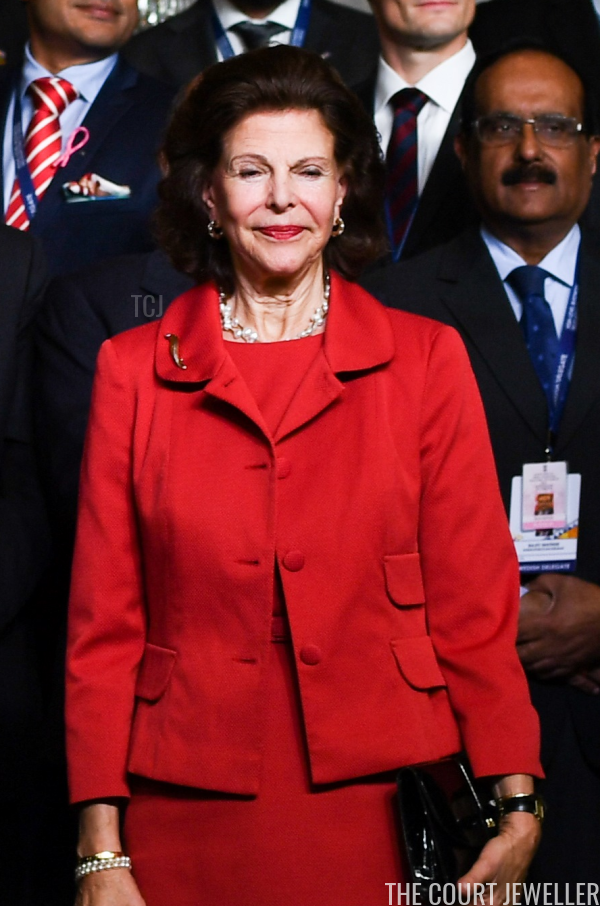 |
| SAJJAD HUSSAIN/AFP via Getty Images |
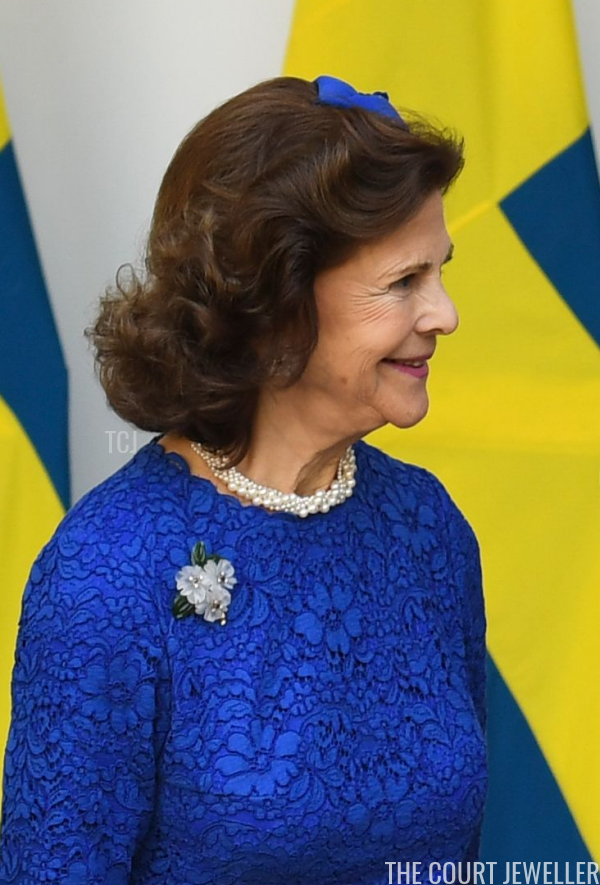 |
| PRAKASH SINGH/AFP via Getty Images |
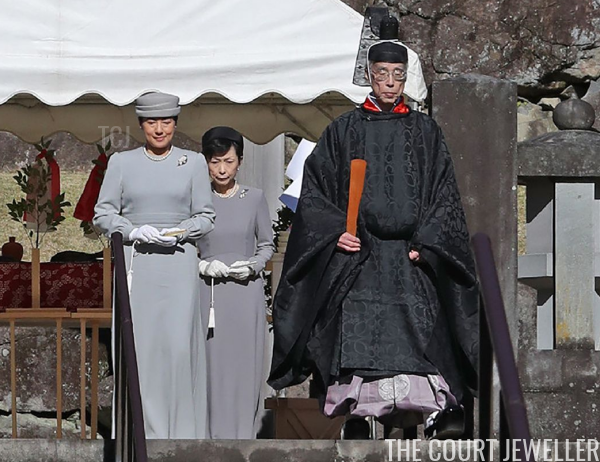 |
| STR/JIJI PRESS/AFP via Getty Images |
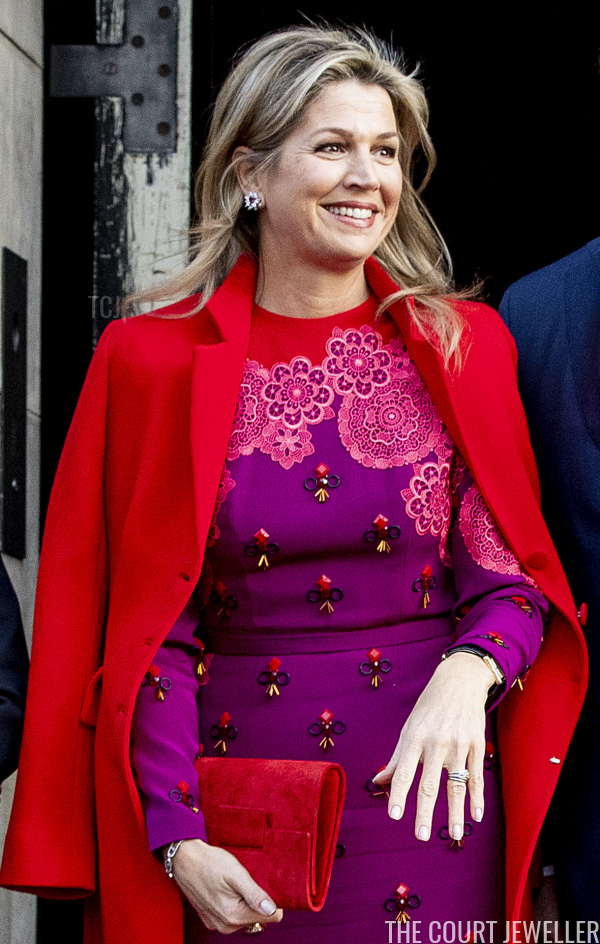 |
| Patrick van Katwijk/Getty Images |
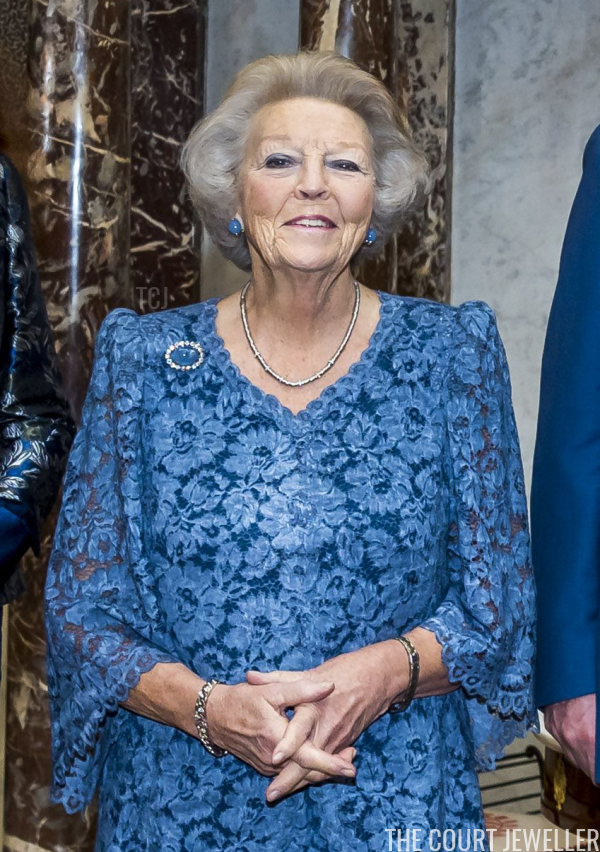 |
| LEX VAN LIESHOUT/ANP/AFP via Getty Images |
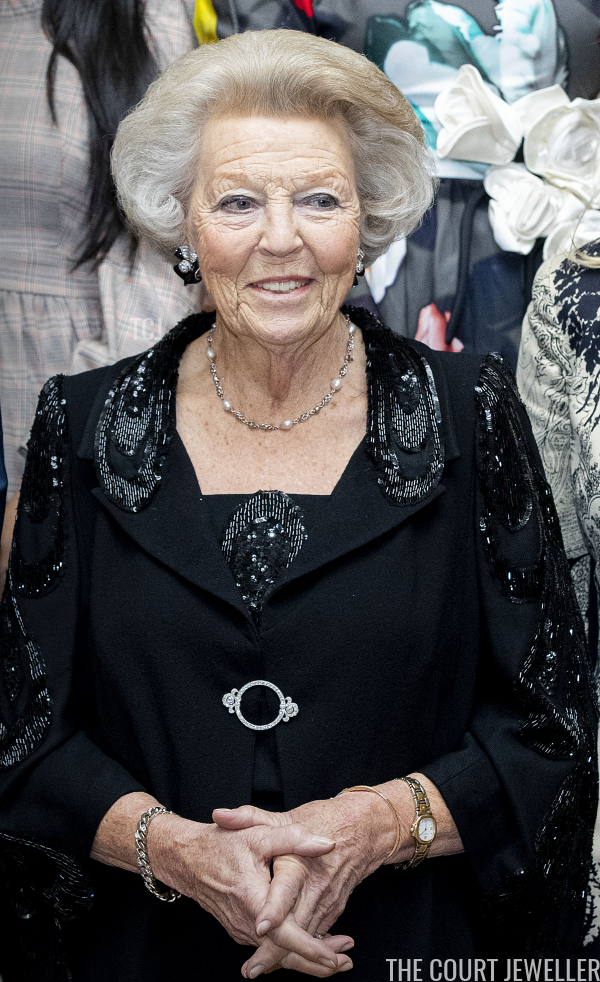 |
| Patrick van Katwijk/Getty Images |
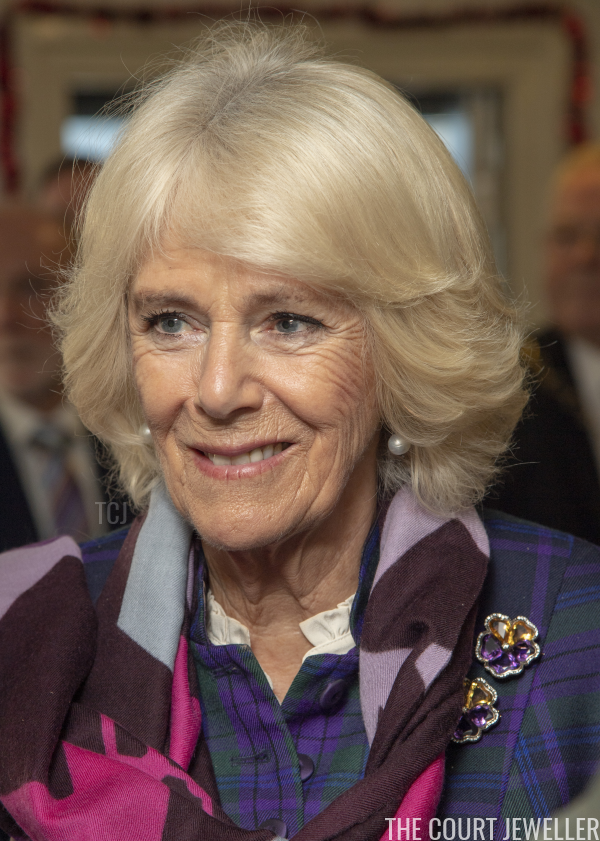 |
| Arthur Edwards – WPA Pool/Getty Images |
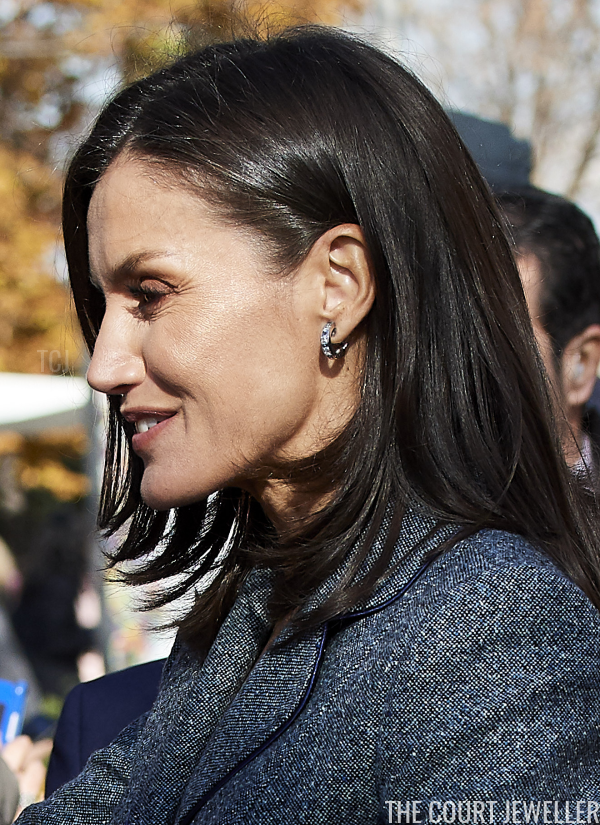 |
| Carlos Alvarez/Getty Images |
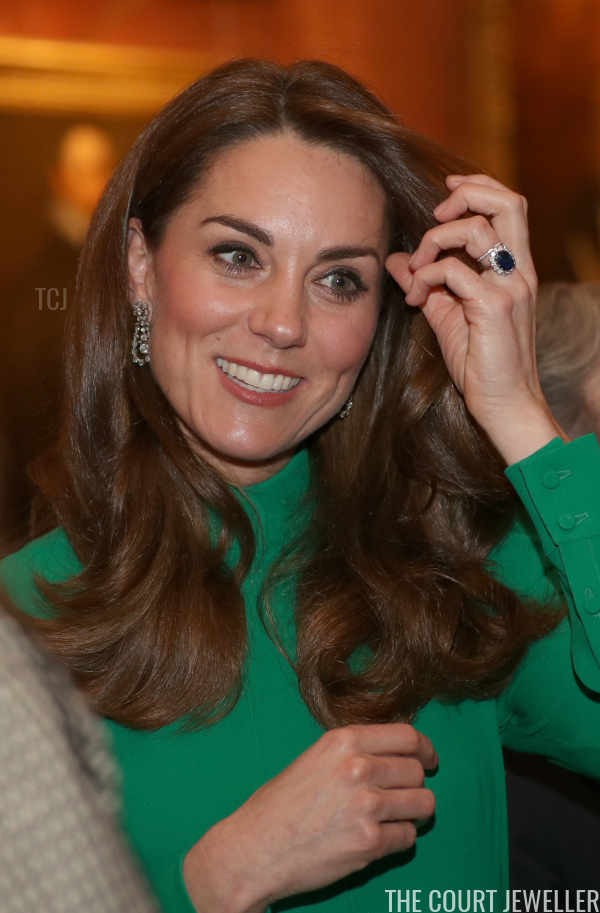 |
| Yui Mok – WPA Pool/Getty Images |
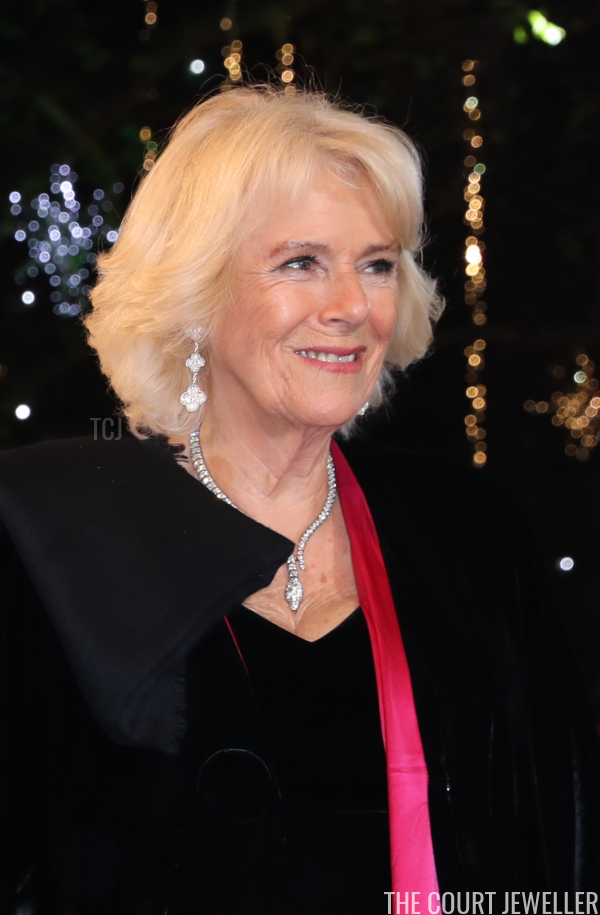 |
| Isabel Infantes – WPA Pool/Getty Images |
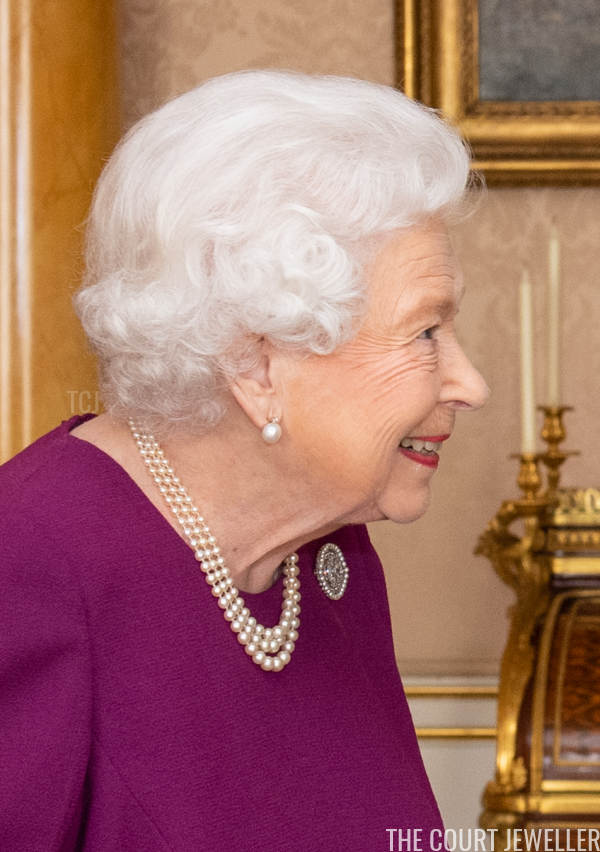 |
| Dominic Lipinski – WPA Pool/Getty Images |
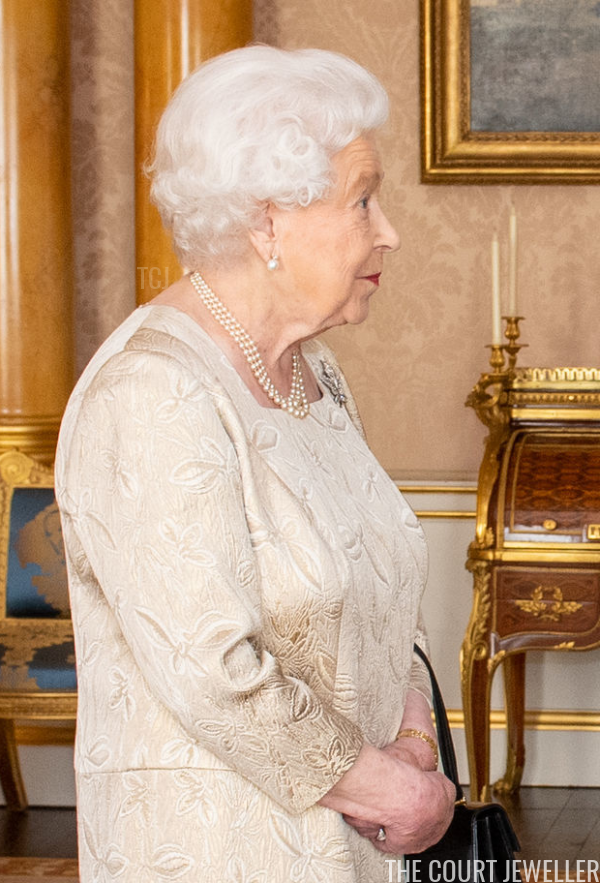 |
| Dominic Lipinski – WPA Pool/Getty Images |
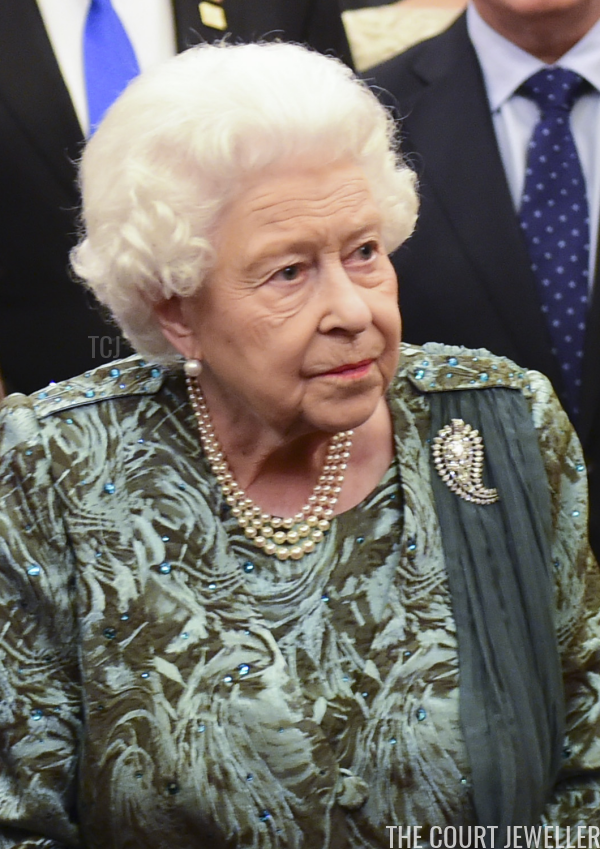 |
| GEOFF PUGH/POOL/AFP via Getty Images |
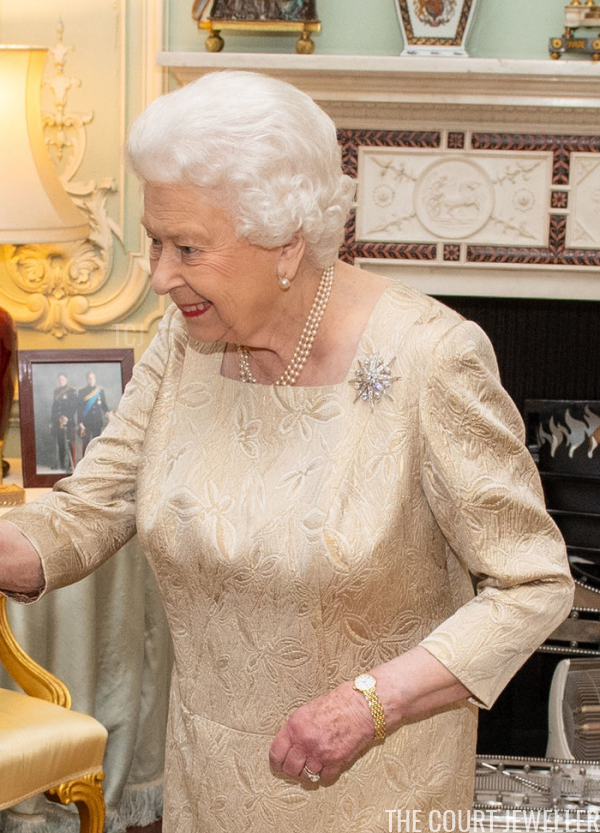 |
| Dominic Lipinski – WPA Pool/Getty Images |
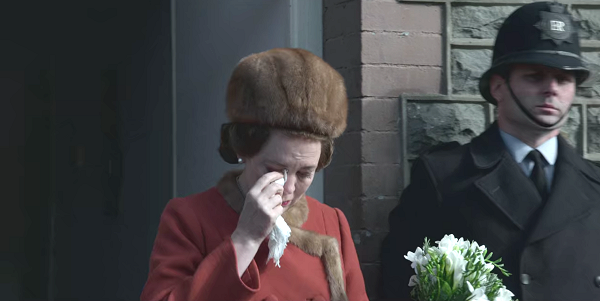
We’ve got another look at the jewels and the history behind The Crown today, covering episode three, the tragic and touching “Aberfan.” (Catch up on our previous recaps here!)
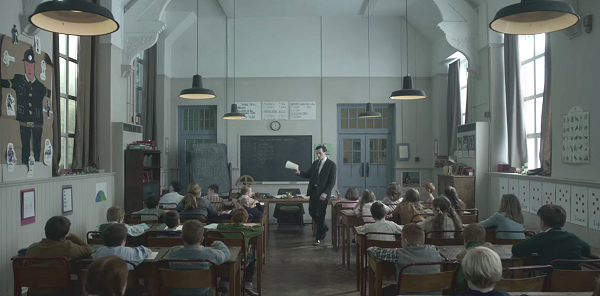
The episode opens in the Welsh mining town of Aberfan on Thursday, October 20, 1966. Children at the local school are shown finishing up the day, playing, and practicing a song to perform the following day.
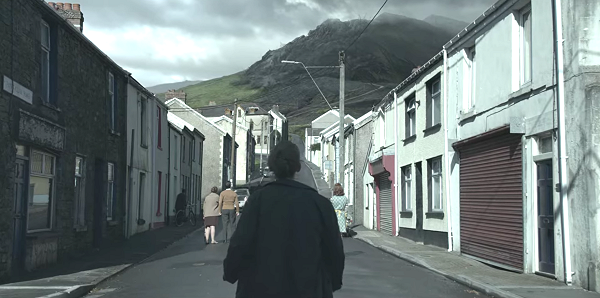
But, as any students of history would have immediately known from the town’s name and the date, Friday, October 21 would bring unimaginable tragedy, as a mining collapse sent tons of debris down the mountain and into the town. The school, as well as several nearby buildings and homes, was buried, just after the children and teachers had begun their day.
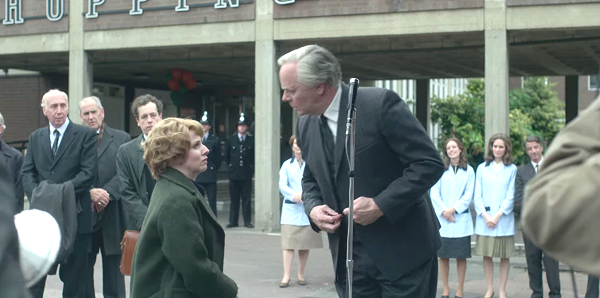
Prime Minister Harold Wilson is opening a new shopping center when his private secretary, Marcia Williams, informs him of the disaster. (I’ll drop a couple of historical notes here along the way, because — as per usual — Peter Morgan is significantly fudging the timeline to suit his portrayal of the people involved. Wilson was in Wigan on October 21, inaugurating the Scholes redevelopment scheme. The show depicts him rushing away from his speech, but he really stayed throughout the day, even taking a bus tour of the town after lunch. Wilson returned to London after finishing the scheduled visit, and he didn’t firmly decide to visit the scene until after a conversation with the Secretary of State for Wales, which took place in the early evening.)
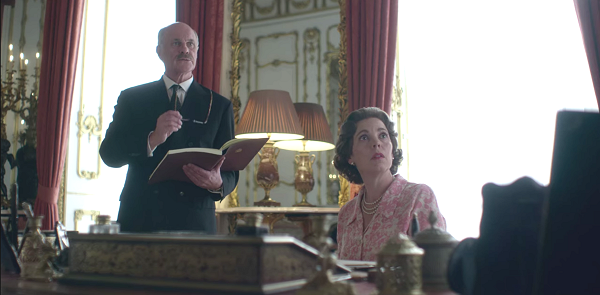
The pearl-clad Queen and Michael Adeane are informed at Buckingham Palace. Martin Charteris reads out a statement of sympathy for her approval. (A statement was indeed dispatched.) He also asks her if Harold Wilson can borrow a plane to go visit the site, which she approves, and then floats the idea that she might want to go visit herself, which strikes both her and Adeane as ridiculous. “The Crown visits hospitals, Martin, not scenes of accidents,” she chides him. (Guess the Blitz didn’t count?)
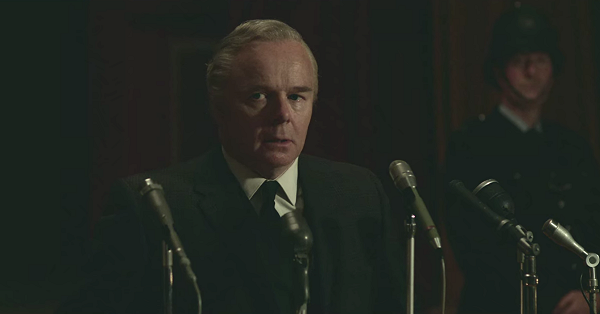
Meanwhile, Wilson does arrive at the scene of the accident, and he’s horrified at what he sees. He also addresses with angry locals, who accuse the government of having ignored their warnings about the unstable spoil tip.
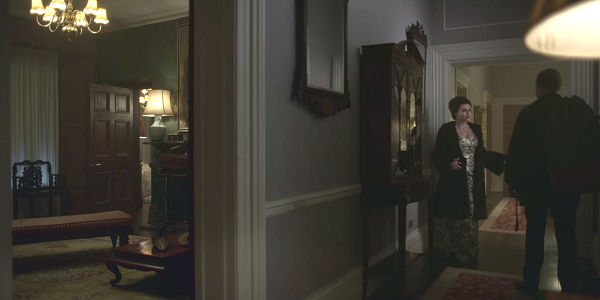
Back at Kensington Palace, Tony packs a bag and heads to Wales, telling a confused Princess Margaret that she’ll understand why he’s going when she reads the morning papers. (She’s just come home from an outing. It seems quite strange that she wouldn’t have encountered a single radio report, evening newspaper headline, or conversation about the disaster, which was all over the news.)
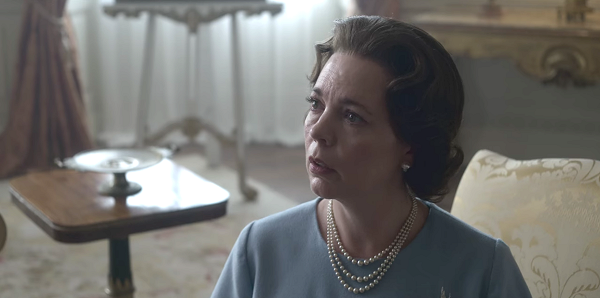
On Saturday, wearing her pearls and an invented brooch, the Queen hears Wilson’s account of his visit to Aberfan. He tries to convince her to go herself. She tells him that the circus of attention that surrounds her mere presence would surely hinder the rescue and recovery efforts. He seems unconvinced. (In reality, the Queen had already sent the Duke of Edinburgh to Aberfan on the morning after the disaster happened.)
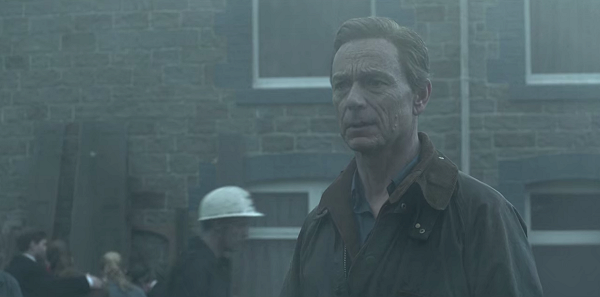
Tony is also on the scene, and he can’t believe what he’s seeing. He telephones Princess Margaret to recount the terrible tragedy. Tony was indeed the first member of the royal family on the scene, arriving a few hours before Prince Philip, but it was a much more regulated visit than The Crown makes it seem; for at least part of the visit, he was accompanied by the Minister of State for Wales.
It’s also worth noting that Wales was important to Tony: his father was Welsh, and his title, Earl of Snowdon, was given to him in honor of his Welsh heritage. There is, of course, another member of the family with an even more important Welsh title. The show doesn’t mention it, but Prince Charles (who was 17 and studying at Gordonstoun) took it upon himself to send a telegram expressing his sympathies within a day of the tragedy.
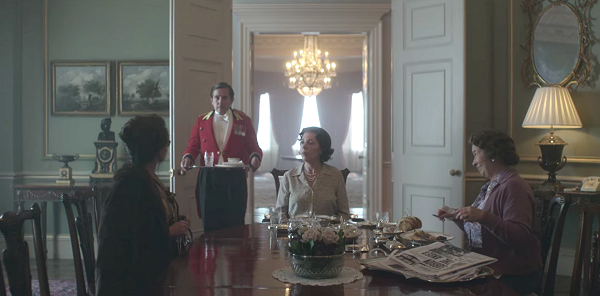
On Sunday morning, Margaret has breakfast with her mother and sister, and she recounts the terrible things that Tony told her he saw in Wales.
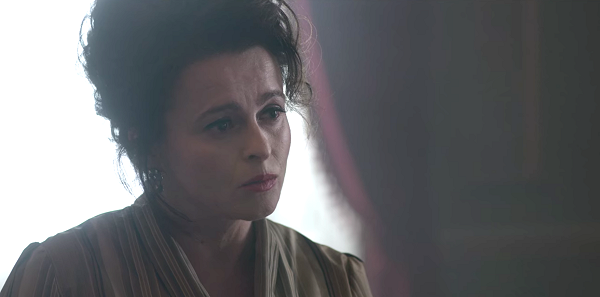
She’s wearing a pair of very ’60s earrings. She orders whiskey with breakfast, but she is clearly very emotional about Tony’s account.
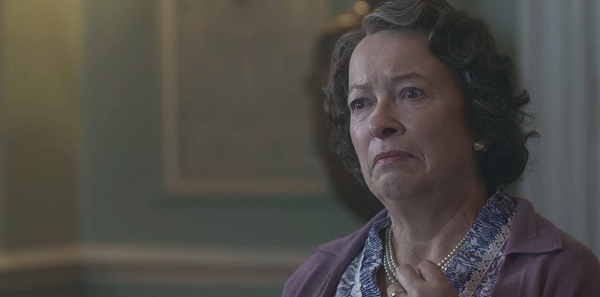
The Queen Mother reaches for her pearls — used over and over again in the series as a sort of choke-collar of royal status — as she listens.
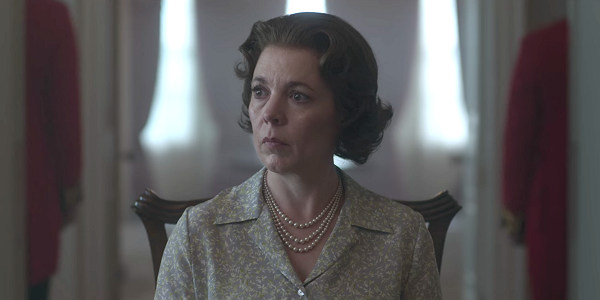
And the Queen, in pearls but no brooch, listens carefully, too. (Remember that in real life, the Duke of Edinburgh would already have returned from his own visit to Aberfan, and would have told her about similar experiences.)
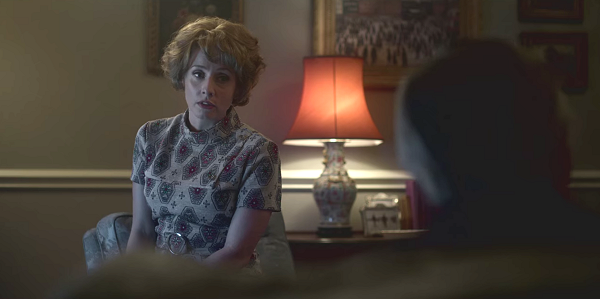
On Monday, Wilson watches a news conference with Marcia Williams. She tells him that she (as well as several cabinet members) thinks the entire incident is getting too political, and Wilson should try to deflect the blame on to someone else. If not the Tories, why not the Queen? Marcia says that the Queen’s “behavior is symptomatic of establishment neglect.” (Real history note: plans for the Queen to visit herself were already in the works by this point. Buckingham Palace announced on Tuesday, October 25 that HM and Prince Philip would be going to Aberfan that Saturday.)
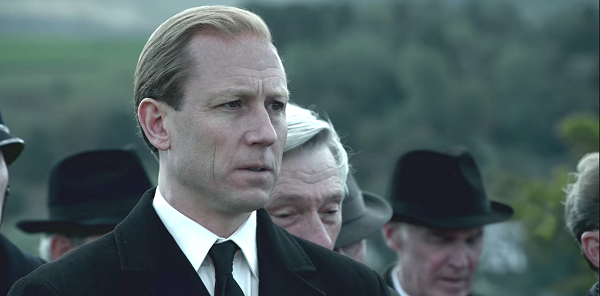
In the twisted-up timeline of The Crown, Prince Philip finally visits Aberfan on Thursday. The show version of Wilson told Marcia Williams in the previous scene that “they pulled [Philip] away from some duck shoot” to get him to go. This show has been pretty horrible in its portrayal of Philip throughout, but suggesting that he dragged his heels about going to Aberfan, when he was really one of the first public figures to visit the scene (nearly a week earlier than depicted here!), is awfully low. The show depicts Marcia Williams asking Harold Wilson to let the British people be ticked off at the royals as a way to vent their anger — and it seems like Peter Morgan has rearranged the timeline to make the viewers of his show do the same thing.
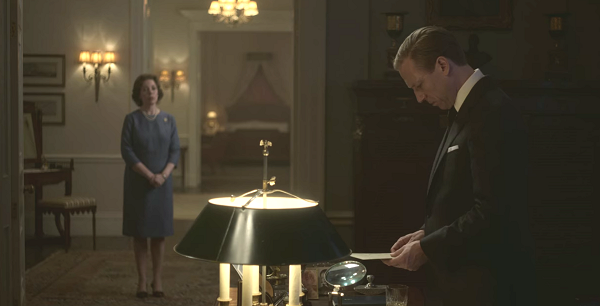
He returns home after attending one of the mass funerals. (A funeral for 81 children did take place on Thursday, October 27, but Prince Philip was not one of the 10,000 people in attendance.) He tells her about the terrible things he saw.
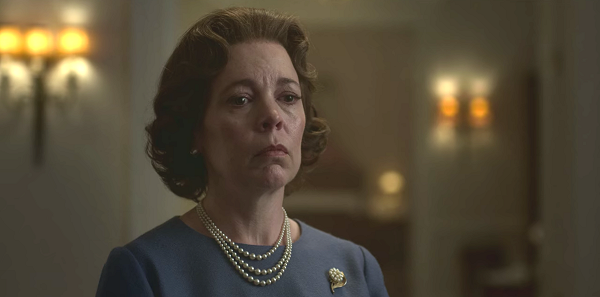
The Queen, who is wearing a rather dinky little pearly flower brooch, mostly wants to know if being in Aberfan made him cry. He’s a little incredulous at the question, telling her that he did indeed cry, and so would anyone who had heard the people singing a hymn, “Jesus, Lover of My Soul,” during the funeral. (The hymn really was sung during the mass funeral service.)
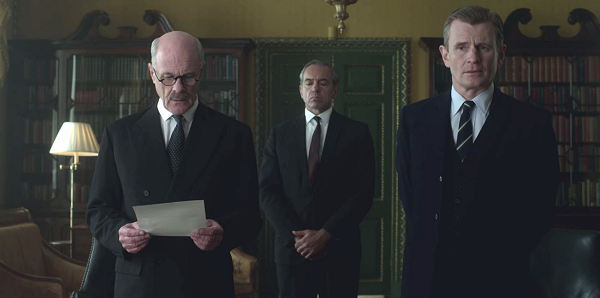
On Friday, Michael Adeane and Martin Charteris tell the Queen that someone inside the government is trying to plant stories in the press that depict her as absent, uncaring, and unfeeling. (Have we discussed the fact that Martin Charteris is now played by Charles Edwards — which means that the character has been portrayed by both of Edith’s love interests from Downton Abbey???)
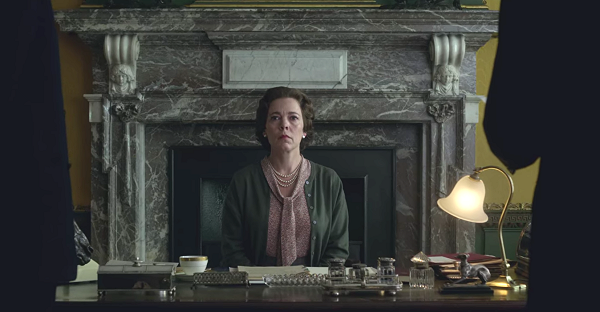
The Queen, in pearls, is stone-faced as she hears the accusations. Once again, I’ll note that the Queen’s visit to Aberfan, in reality, was announced three days before this scene is supposed to take place. This episode really just feels frustratingly like a retread of Morgan’s earlier royal film, The Queen, with Aberfan standing in for Princess Diana as the tragedy in question.

So, the Queen decides that she’ll go to Aberfan after all. She arrives alone on Saturday. (She was accompanied by Prince Philip for her real visit.) Her outfit here, including the lack of a brooch, is a close copy of her real ensemble for the visit. She meets with families and dabs her eyes in front of the cameras. (That didn’t really happen.)
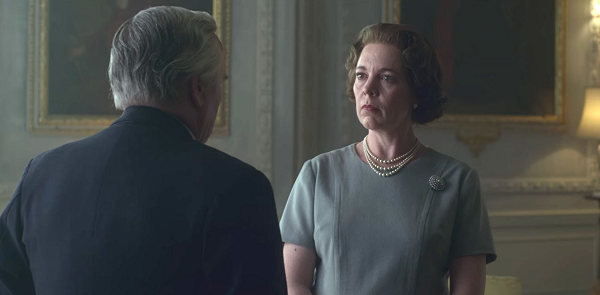
Back at the palace, though, she wears an invented brooch as she lambasts Wilson for any role he may have had in attempting to plant those stories. He denies involvement, and the two talk about the performances required of public figures. The show version of the Queen was resistant to going to Aberfan, it turns out, because she doesn’t ever cry, and she knew she was supposed to show emotion.
Here’s a thought — if her inner drama throughout the episode was supposed to be about her lack of outward emotion, why not replace these silly non-royal brooches with real items connected to emotional times in her life? The Flower Basket Brooch often stands in for her beloved late father. For one of the services during Queen Mary’s state funeral ceremonies, she wore the Flame Lily Brooch (which she also wore when returning to Britain after her father’s death). Both of these were featured in earlier episodes. Why not now???
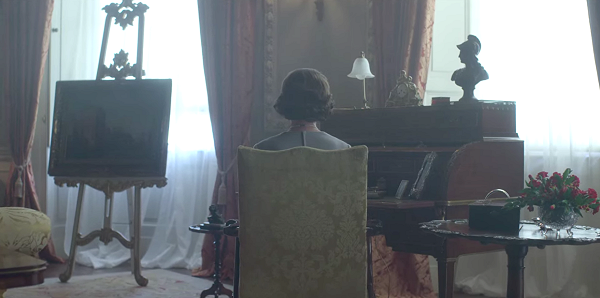
The episode ends with the Queen sitting alone, beside a bust of a warrior, listening to a recording of the hymn that Philip heard at the Aberfan funeral. She finally gets one tear to slide down her cheek.